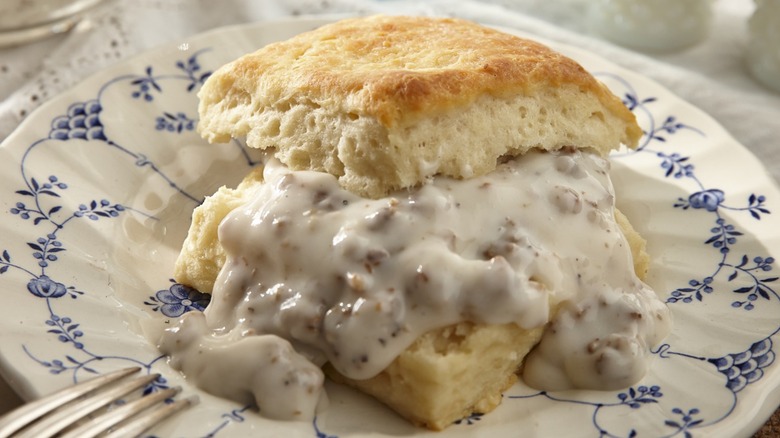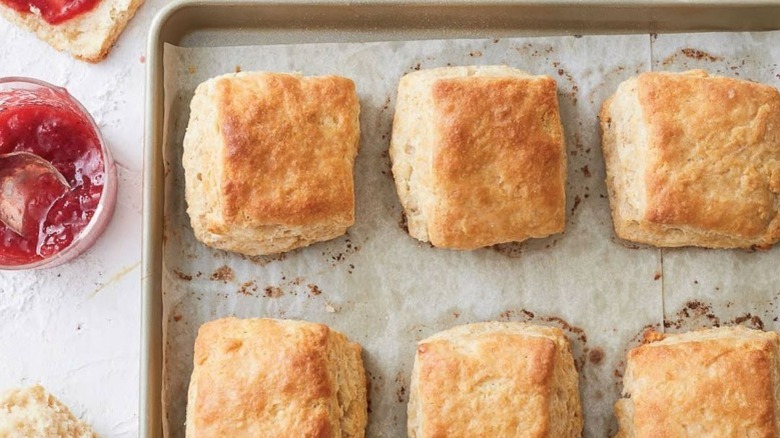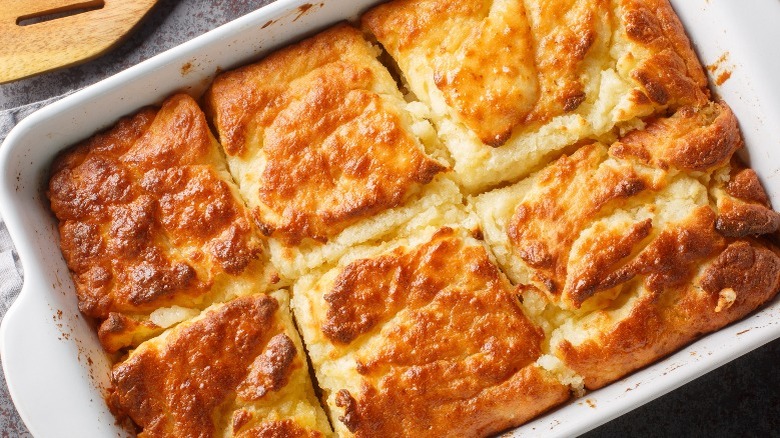The Trick To Perfecting Your Square Biscuit Game
Square biscuits aren't as controversial as they once were. The fluffy treats made without a traditional biscuit cutter are just plain easier and faster to make. They also taste great, whether you opt for a regular rendition or use a fancy cheddar-scallion biscuits recipe.
However, there's still one simple way to up your square biscuit game that doesn't add to your pile of dishes, but makes your biscuits rise taller and flakier. Before you cut those squares, trim the edges. That doesn't mean you have to waste the scraps: You can bake those right along with the biscuits and call it a baker's bonus. As an added plus, trimming gives your biscuits a much more professional look. It takes all of 30 seconds, but it can mean the difference between a wonky mess of tasty but unpolished biscuits and a spread that makes it look like you went to culinary school.
The science behind trimming for a better rise
There are two important factors in baking the best biscuits: leavening and lamination. Leavening is the rise you get from your breads. While it's caused by yeast (biological leavening) in some breads, biscuits get their rise from chemical leavening agents like baking soda or baking powder. On its own, leavinging contributes to light, fluffy biscuits.
Leavening agents are a must, but lamination is optional when you use leavening agents. Lamination is the process of creating multiple layers of dough and fat by folding between rolling sessions like you do with croissants. Done right, it's what gives you light, flaky layers — but it's also a form of mechanical leavening. The chemical leaveners (soda and powder) create air (or steam once it combines with liquids in the dough). That air gets temporarily trapped between the layers caused by lamination and causes them to rise, creating pockets that lift the height of the biscuits.
Whether you opt for leavening alone or leavening plus lamination, trimming the edges of your dough before cutting it into squares serves to remove the edges squashed during the rolling and lamination processes, allowing them to rise just as well as the edges you're about to create by cutting and preventing lopsided biscuits. Just imagine folding a paper fan. When you let go of one edge, it unfurls into a pretty contraption to move air in the right direction. However, the other edge doesn't do the same unless you free it from any physical restraint you're using, such as your fingers, tape, or glue.
Using square biscuits in culinary creations
If you're like most people, you think of biscuits of any shape as a vehicle for condiments like jam or gravy. However, the perfectly trimmed square ones are a bit more versatile in terms of other recipes too. They can easily sit atop a casserole for biscuity coverage drop biscuits can't provide. Layer them over a savory breakfast casserole or shepherd's pie.
They're also superior for sandwiches. 'Tis better to force a round egg onto a square biscuit than a square slice of cheese or deli meat onto a round one. No one likes ingredients that unceremoniously flap beyond the confines of the bread.
You can have a little fun by layering them into breakfast or brunch stacks. Alternate biscuit halves with ingredients, like strawberries or peaches and whipped cream, for a sweet treat — or smoked salmon and avocado for a savory flourish.


